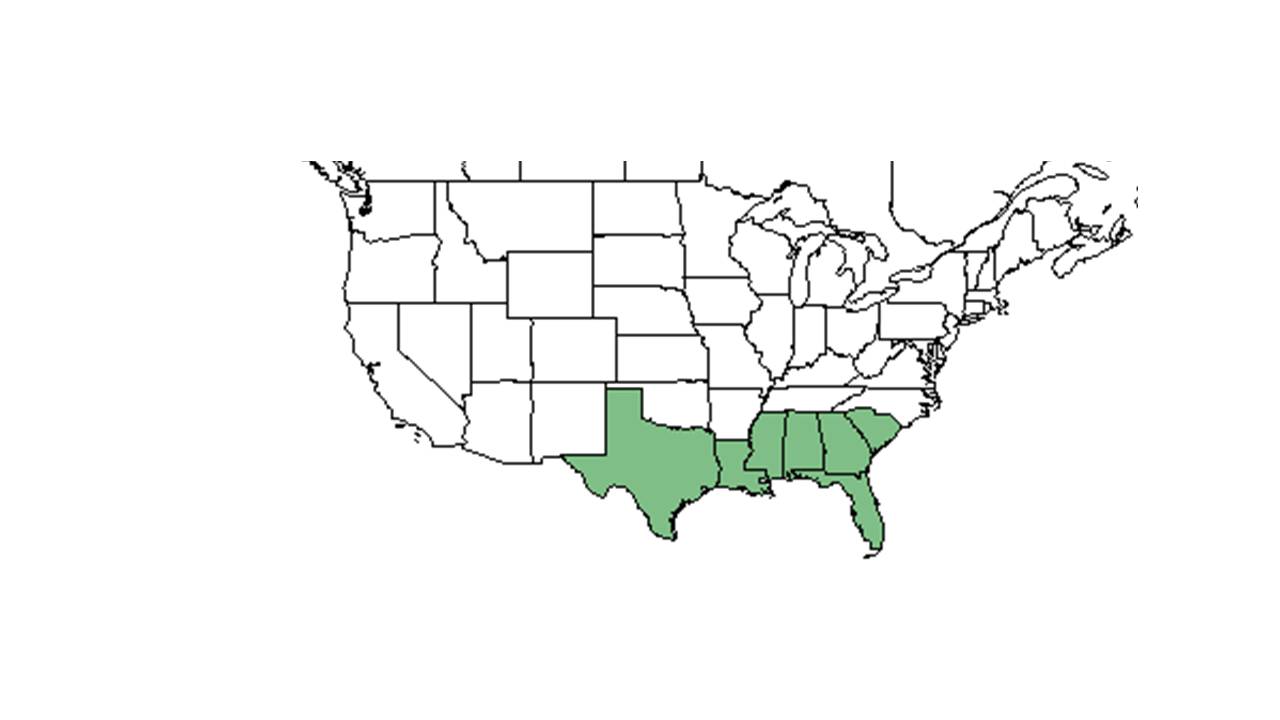Habenaria quinqueseta
| Habenaria quinqueseta | |
|---|---|

| |
| Photo was taken by Gil Nelson | |
| Scientific classification | |
| Kingdom: | Plantae |
| Division: | Magnoliophyta - Flowering plants |
| Class: | Liliopsida – Monocotyledons |
| Order: | Orchidales |
| Family: | Orchidaceae |
| Genus: | Habenaria |
| Species: | H. quinqueseta |
| Binomial name | |
| Habenaria quinqueseta (Michx.) Eaton | |

| |
| Natural range of Habenaria quinqueseta from USDA NRCS Plants Database. | |
Common names: longhorn bog orchid; long-horned habenaria; Michaux’s orchid; longhorn false reinorchid
Contents
Taxonomic notes
Synonym: none[1]
Varieties: none[1]
Description
A description of Habenaria quinqueseta is provided in The Flora of North America.
Habenaria quinqueseta is a perennial herbaceous species. It reaches heights of about 27 inches with white flowers.[2]
Distribution
Habenaria quinqueseta is distributed along the southeastern coastal plain, from South Carolina south to southern Florida and west to southeastern Texas.[3]
Ecology
Habitat
H. quinqueseta is generally found in moist hardwood hammocks, wet pine flatwoods, ditches, and Altamaha Grit outcrops.[3] It has been observed in moist to dry loamy or sandy soils of longleaf pine savannas and open mixed woodlands.[4] As well, it can be found along roadsides, and in swamps, meadows, and dry to wet mixed flatwoods.[5] It is listed by the USDA Natural Resources Conservation Service as a facultative wetland species that most often occurs in wetland habitats but can also occasionally be found in non-wetland habitats.[6] It has been shown to decrease in frequency with clearcutting the overstory.[7] This species is also considered an indicator species of the north Florida longleaf woodlands habitat.[8]
Associated species include Pinus, Quercus, Magnolia, Cornus, Liquidambar styraciflua, Vaccinium, Pinus taeda, and Quercus nigra.[4]
Habenaria quinqueseta is an indicator species for the North Florida Longleaf Woodlands community type as described in Carr et al. (2010).[9]
Phenology
This species generally flowers between August and October.[3] It has been observed flowering and fruiting in September and October.[4][10]
Seed dispersal
This species is thought to be dispersed by gravity. [11]
Fire ecology
Populations of Habenaria quinqueseta have been known to persist through repeated annual burning,[12][13] and commonly grows in habitats that are fire-dependent.[8]
Conservation, cultivation, and restoration
It is listed on the global status as G4 due to this species being critically imperiled in Texas, Louisiana, Georgia, and South Carolina.[5]
Cultural use
Photo Gallery
References and notes
- ↑ 1.0 1.1 Weakley, A.S. 2020. Flora of the Southeastern United States. Edition of 20 October 2020. University of North Carolina at Chapel Hill, Chapel Hill, North Carolina.
- ↑ [[1]] Lady Bird Johnson Wildflower Center. Accessed: May 17, 2019
- ↑ 3.0 3.1 3.2 Weakley, A. S. (2015). Flora of the Southern and Mid-Atlantic States. Chapel Hill, NC, University of North Carolina Herbarium.
- ↑ 4.0 4.1 4.2 Florida State University Robert K. Godfrey Herbarium database. URL: http://herbarium.bio.fsu.edu. Last accessed: June 2014. Collectors: Loran C. Anderson, R. Kral, U. Reis, Richard R. Clinebell II, Leon Neel, and Paul C. Standley. States and Counties: Florida: Leon. Georgia: Dougherty and Thomas. Country: Honduras
- ↑ 5.0 5.1 [[2]] NatureServe Explorer. Accessed: May 17, 2019
- ↑ USDA, NRCS. (2016). The PLANTS Database (http://plants.usda.gov, 17 May 2019). National Plant Data Team, Greensboro, NC 27401-4901 USA.
- ↑ Brockway, D. G. and C. E. Lewis (2003). "Influence of deer, cattle grazing and timber harvest on plant species diversity in a longleaf pine bluestem ecosystem." Forest Ecology and Management 175: 49-69.
- ↑ 8.0 8.1 Carr, S. C., et al. (2010). "A Vegetation Classification of Fire-Dependent Pinelands of Florida." Castanea 75(2): 153-189.
- ↑ Carr, S.C., K.M. Robertson, and R.K. Peet. 2010. A vegetation classification of fire-dependent pinelands of Florida. Castanea 75:153-189.
- ↑ Nelson, G. PanFlora: Plant data for the eastern United States with emphasis on the Southeastern Coastal Plains, Florida, and the Florida Panhandle. www.gilnelson.com/PanFlora/ Accessed: 17 MAY 2019
- ↑ Kirkman, L. Katherine. Unpublished database of seed dispersal mode of plants found in Coastal Plain longleaf pine-grasslands of the Jones Ecological Research Center, Georgia.
- ↑ Robertson, K.M. Unpublished data collected from Pebble Hill Fire Plots, Pebble Hill Plantation, Thomasville, Georgia.
- ↑ Glitzenstein, J. S., D. R. Streng, R. E. Masters, K. M. Robertson and S. M. Hermann 2012. Fire-frequency effects on vegetation in north Florida pinelands: Another look at the long-term Stoddard Fire Research Plots at Tall Timbers Research Station. Forest Ecology and Management 264: 197-209.